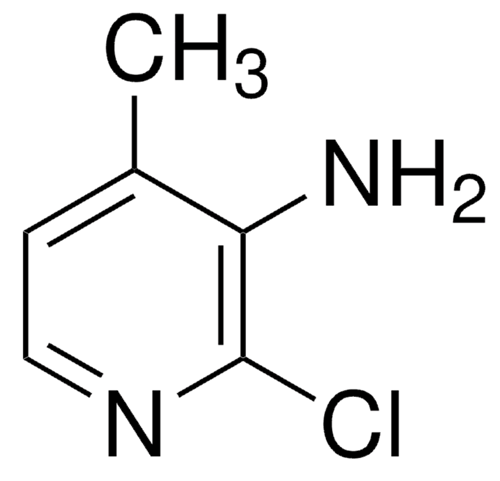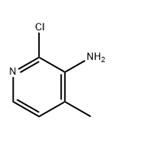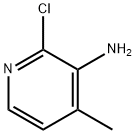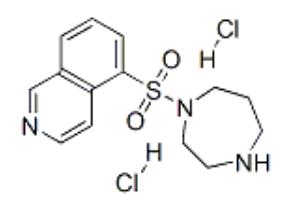3-Amino-2-chloro-4-methylpyridine: Overview and Applications as Drug Intermediates
3-Amino-2-chloro-4-methylpyridine is a Light brown Solid Crystalline with Unpleasant odor, it is stable under normal conditions.

Application
3-Amino-2-chloro-4-methylpyridine is a key intermediate in the production of nevirapine, a non-nucleosidic reverse transcriptase inhibitor that has been established to be clinically useful for the treatment of infection by HIV-1.
Synthesis
A method for making 3-amino-2-chloro-4-methylpyridine comprising the following steps:
(a) reacting malononitrile with acetone to yield isopropylidenemalononitrile;
(b) condensing the isopropylidenemalononitrile so produced with triethyl ortho formate in acetic acid anhydride yield a mixture of 2-(3-ethoxy-l-methyl-(E)-2- propenylidene)malononitrile and 2-(3 ,3 -diethoxy- 1 -methylpropylidene)malononitrile;
(c) treating the mixture of 2-(3 -ethoxy- 1 -methyl-(E)-2- propenylidene)malononitrile and 2-(3,3-diethoxy-l-methylpropylidene)malononitrile so produced with anhydrous ammonia in ethanol, to effect ring closure, thus producing 2-amino- 4-methyl-pyridine-carbonitrile;
(d) reacting the 2-amino-4-methyl-pyridine-carbonitrile so produced with sodium nitrite, to yield the diazonium salt thereof, and thereafter treating the diazonium salt in situ with water to yield 2-hydroxy-4-methyl-3-cyanopyridine;
(e) reacting the 2-hydroxy-4-methyl-3-cyanopyridine so produced with phosphorus oxychloride to yield 2-chloro-4-methyl-3-pyridinecarbonitrile;
(f) treating the 2-chloro-4-methyl-3-pyridinecarbonitrile so produced with concentrated sulfuric acid, to effect hydrolysis, to yield 2-chloro-4-methyl-3-carboxamide; and,
(g) converting the 2-chloro-4-methyl-3-carboxamide so produced, via the Hofmann reaction (treatment with solution of chlorine or bromine in excess sodium hydroxide), to 3-amino-2-chloro-4-methylpyridine.1
Reference
1.WO2000043365A1
You may like
Related articles And Qustion
See also
Lastest Price from 3-Amino-2-chloro-4-methylpyridine manufacturers

US $0.00/Kg/Drum2025-04-21
- CAS:
- 133627-45-9
- Min. Order:
- 1KG
- Purity:
- 98%min
- Supply Ability:
- 1000kg

US $0.00-0.00/kg2025-04-04
- CAS:
- 133627-45-9
- Min. Order:
- 1kg
- Purity:
- 98%
- Supply Ability:
- 1Ton



